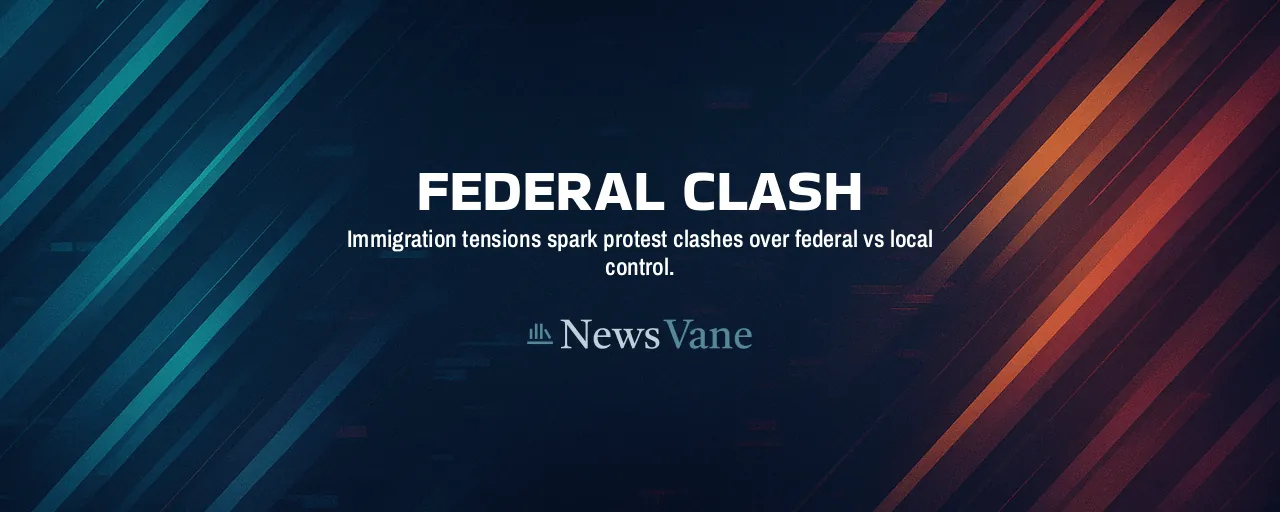A City Divided
In June 2025, Los Angeles became a flashpoint. Protests against federal immigration raids turned violent, with rocks thrown, cars burned, and flags set alight. The Department of Homeland Security labeled the unrest a riot, accusing local leaders of misrepresenting the chaos. City officials and activists, however, described the violence as isolated, triggered by aggressive federal tactics. Sorting through these conflicting accounts reveals a complex struggle over truth and justice.
The protests began as thousands rallied against large-scale deportation operations across California. Demonstrators blocked highways and gathered outside federal buildings, driven by fears of family separations and tightened asylum rules. The Department of Homeland Security highlighted attacks on officers and property damage, warning of a breakdown in order. These dueling narratives left Americans wrestling with questions about protest rights, law enforcement, and immigration policy.
The Roots of Conflict
The Department of Homeland Security issued stark warnings about the protests, citing Molotov cocktails and assaults on law enforcement. Assistant Secretary Tricia McLaughlin criticized local leaders for calling the demonstrations peaceful and urged action. Agency videos showed protesters hurling rocks and setting police vehicles ablaze, prompting President Trump to send 2,000 National Guard members and 700 Marines. This federal response raised legal questions about state authority and military involvement.
City officials offered a contrasting view. The Los Angeles Police Department reported 50 arrests and five officer injuries, emphasizing that violence was limited to specific areas. Officers used over 600 less-lethal rounds, which activists say escalated tensions. Local reports and footage, including an incident where rubber bullets injured an Australian journalist, suggest federal forces intensified clashes. The Los Angeles Times noted that manageable protests grew chaotic after federal advances.
Academic research provides context. Colorado College studies indicate police are more likely to use force at protests tied to racial or social justice, even when crowd behavior is similar. In Los Angeles, seven police misconduct investigations opened within days, pointing to possible overreach. The deployment of federal troops without Governor Newsom's approval further muddled coordination, underscoring friction between local and federal priorities.
Sanctuary Policies in the Spotlight
California's sanctuary policies, which restrict local cooperation with federal immigration enforcement, lie at the core of this debate. The Department of Homeland Security argues these policies protect criminals, citing cases where repeat offenders were released from local custody. Think tanks like the Heritage Foundation echo this view, and Trump's 2025 executive order to withhold federal funds from sanctuary cities heightened the stakes.
Supporters of sanctuary policies emphasize community benefits. Research from the National Academy of Sciences and the American Immigration Council finds no significant link between sanctuary status and increased violent crime. Sanctuary counties often report higher incomes and lower unemployment. Proponents of these policies highlight a 12-point rise in crime-reporting by Latino residents after sanctuary measures, arguing that trust in police grows when deportation fears fade.
These policies trace back to the 1970s, when Los Angeles limited police involvement in immigration to protect Central American refugees. Now, over 200 jurisdictions nationwide adopt similar measures, fueling legal disputes over federal power and local autonomy. While federal authorities and opponents push for mandatory compliance, proponents view sanctuary laws as essential for community safety and constitutional balance.
A Fractured Public Narrative
The Los Angeles protests revealed deep divisions in how events are perceived. Some media outlets focused on flag burnings and property damage, portraying protesters as a threat to order. Others emphasized police tactics, pointing to tear gas and less-lethal rounds as catalysts for violence. Social media worsened the confusion, circulating misleading images, like a 1983 movie still presented as current footage, inflating perceptions of chaos.
Polarization drives these distortions. A 2025 study in the International Journal of Communication shows that strong partisan views predict support for extreme protest tactics, whether from left-leaning or right-leaning groups. Surveys indicate 35 percent of left-leaning demonstrators now see violence as potentially justified, while public belief that immigrants raise crime has grown. As rhetoric sharpens, finding agreement on what constitutes lawful protest becomes harder.
Paths Forward
The Los Angeles unrest highlights challenges for protesters, police, and policymakers. Studies from the National Institute of Justice suggest de-escalation and community dialogue can reduce conflict, but officers face real safety concerns and institutional hurdles. Coordinating local and federal responses while respecting free speech and public safety remains a persistent issue as protests grow more frequent.
Sanctuary policies will continue to spark debate. Data showing no clear crime surge in sanctuary areas clashes with high-profile cases that fuel distrust. Resolving this tension requires honest engagement with evidence and specific concerns, moving beyond broad generalizations. Legal battles over funding and compliance are likely to persist, shaping the future of immigration enforcement.
Los Angeles stands at a crossroads. The protests reflect deep anxieties about immigration, authority, and justice. Moving forward demands clarity about what happened and why. Only by addressing the underlying fears and divisions can the city, and the nation, find a way to heal.
